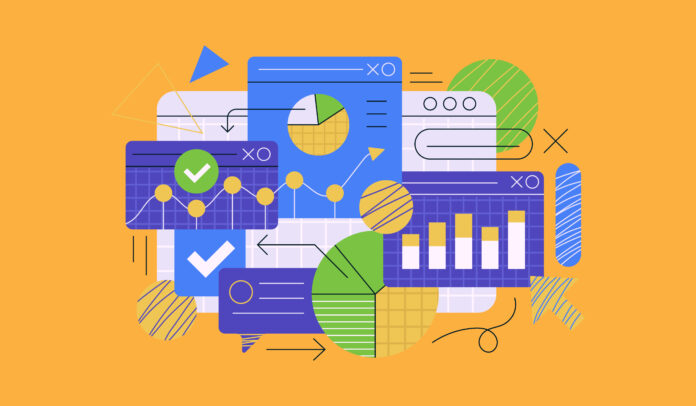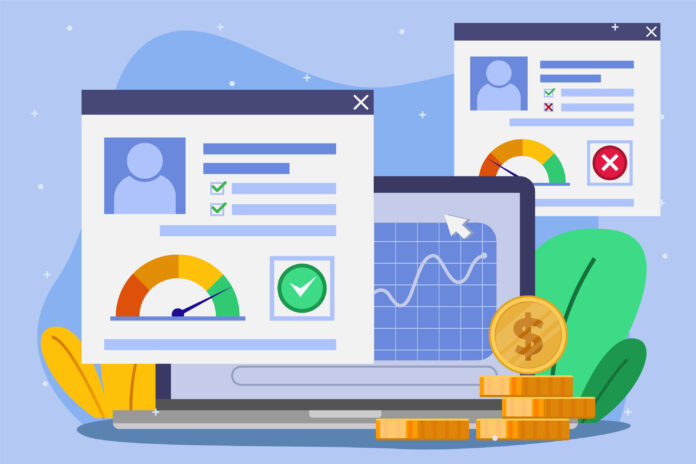FP&A Tools: The Architect of Financial Dreams & Blueprints

In treacherous waters, every ship needs a trusted navigator to guide strategic moves. For enterprises, that role falls to a rising function—neither controller nor visionary, but a prescient advisor merging both. This is where FP&A tools come into play.
Financial planning and analysis (FP&A) play a crucial role for any business, large or small. Like a crystal ball, FP&A tools provide the power to gaze into the future – granting companies the clarity and confidence to adapt financial strategy on the fly. The hours once wasted wrestling with spreadsheets can now be spent uncovering key business drivers and opportunities.
Abracadabra – it’s FP&A magic time!
What is Financial Planning & Analysis (FP&A)?
Financial Planning & Analysis (FP&A) is the process of budgeting, forecasting, and analyzing a company’s financial performance to help make informed business decisions and plan for the future.
In simple terms, FP&A helps a company plan for the future and understand where it currently stands financially.
What is an FP&A Tool?
FP&A tools are software applications designed to help finance teams with budgeting, forecasting, reporting, and data analysis. They automate parts of the financial planning process that traditionally relied on complex, error-prone spreadsheets.
FP&A tools provide easy-to-understand financial insights through charts, graphs, and key metrics instead of just rows and columns of numbers. Since FP&A tools take the hard work out of spreadsheets, finance leaders can perceive a better handle on the past, present, and future of the business to guide smarter strategic decisions.
How FP&A Software Bridges Departmental Divides?
FP&A tools play a crucial role in connecting different departments across an organization. As the central hub for financial information, the FP&A team enables improved communication and collaboration between groups that may otherwise operate in isolation from one another.

- FP&A connects the CEO by providing strategic insights for long-term decision-making based on financial modeling and forecasting.
- It bridges the CFO by synthesizing operational data into financial implications.
- For Sales and Marketing, FP&A supplies vital analytics to guide targeting and resource allocation.
- With Operations, FP&A partners to identify cost savings and efficiency opportunities grounded in the numbers.
- Lastly, for Accounting, FP&A translates operating plans into quantitative budgets and forecasts.
By intersecting with each department through tailored financial analysis, FP&A fosters understanding and alignment. It speaks the universal language of business – money – across functions.
Practical Applications of FP&A Tools in Corporate Finance
Budgeting and Forecasting
- Utilizing FP&A tools for accurate and dynamic budget creation.
- Implementing forecasting models for predicting financial outcomes.
Variance Analysis
- Analyzing and interpreting variances between planned and actual financial performance.
- Identifying key drivers behind budget variances and implementing corrective actions.
Financial Modeling
- Creating intricate financial models to replicate various scenarios.
- Enhancing decision-making by assessing the impact of various financial factors.
Cash Flow Management
- Deploying instruments for real-time monitoring and control of cash flow.
- Predicting future cash flow needs and optimizing liquidity.
Performance Metrics and KPIs
- Developing and tracking key performance indicators (KPIs) for financial performance.
- Utilizing dashboards and scorecards for visual representation of critical metrics.
Scenario Planning
- Using FP&A tools to create multiple scenarios to assess potential outcomes.
- Evaluating the impact of external factors on financial projections.
Cost Management
- Employing tools to identify and analyze cost drivers within the organization.
- Implementing cost-cutting strategies based on detailed analyses.
Revenue Forecasting
- Utilizing historical data and market trends to forecast future revenue.
- Adjusting revenue forecasts based on changing business environments.
Profitability Analysis
- Conducting detailed analyses to understand the profitability of products, services, or business segments.
- Recognizing possibilities to increase revenue and streamline costs.
Risk Management
- Integrating risk assessment tools into FP&A processes.
- Developing risk mitigation strategies based on identified financial risks.
Strategic Planning
- Aligning FP&A tools with strategic goals and objectives.
- Using data-driven insights for long-term financial planning.
Compliance and Reporting
- Implementing tools to ensure compliance with financial regulations.
- Streamlining financial reporting processes for accuracy and efficiency.
Investment Analysis
- Evaluating potential investments using financial modeling and analysis.
- Assessing the return on investment (ROI) for strategic projects.
M&A Analysis
- Using FP&A tools for due diligence in M&A transactions.
- Assessing the financial impact and synergies of potential acquisitions.
Communication and Collaboration
- Enhancing communication and collaboration among finance teams.
- Utilizing collaborative features in FP&A tools to improve cross-functional coordination.
Top FP&A Tools & Software Available Today
With the rise of cloud computing and big data, the world of financial planning and analysis (FP&A) has seen an explosion of new software tools aimed at helping finance professionals gain insights and streamline processes. In this article, we’ll take a look at some of the top FP&A software options available today that organizations are using to take their finance operations to the next level.
While there is no definitive ranking or single best system, each of these FP&A solutions offers unique capabilities and benefits that can provide value in different contexts. Keep reading as we delve into the key features and differentiators of the top options.
Adaptive Insights by Workday:

Best Customer:
- Medium to large enterprises.
- Companies seeking a user-friendly, cloud-based FP&A solution.
- Organizations looking for seamless integration with Workday’s broader suite of applications.
Key Features:
- Robust budgeting and forecasting.
- Dynamic modeling for scenario planning.
- Integration with Workday.
Benefits:
- Streamlined financial planning.
- Enhanced collaboration and data accuracy.
- Real-time insights for informed decision-making.
Workday FP&A Pricing:
- Workday Adaptive Planning Free Trial – 30-day risk-free trial to test capabilities.
- Workday Adaptive Planning Pricing – Personalized quotes available upon request.
- Add-on Option – Planning & Consolidation package for unified planning and consolidation.
For more details on pricing options and features, visit https://www.workday.com/en-us/products/adaptive-planning/pricing.html.
Anaplan:

Best Customer:
- Businesses of all sizes, including enterprise-level companies.
- Companies requiring flexibility and scalability in financial planning.
- Organizations with a focus on collaborative, cross-functional planning.
Key Features:
- Cloud-based integrated business planning.
- Scenario modeling and predictive analytics.
- Collaboration tools for cross-functional teams.
Benefits:
- Agile and adaptable financial planning.
- Facilitated collaboration and data-driven decision-making.
- Scalability for businesses of all sizes.
Anaplan Pricing
Anaplan offers three editions for its Connected Planning platform:
- Basic
- Professional
- Enterprise
Please visit the official Anaplan website at https://www.anaplan.com/pricing/ and navigate to their ‘Contact Us’ page to submit an inquiry or request additional information. The platform is considered relatively low-cost and provides a quick return on investment (ROI).
Drivetrain.ai:

Best Customer:
- Medium to large enterprises
- Companies seeking AI-driven financial planning and analysis
- Industries like retail, manufacturing, and healthcare
Key Features:
- Uses AI and machine learning for automated financial planning and forecasting
- Self-updating models reacting to business changes
- Continuous rolling forecasts
- Automated variance analysis
- Customizable reporting dashboards
Benefits:
- Saves time by automating repetitive FP&A tasks
- More accurate forecasts using AI and ML
- Always up-to-date plans and forecasts
- Easy to use dashboards and visualizations
- Flexible to adapt to changing business needs
Drivetrain AI FP&A Pricing
- No setup fee for entry-level
- Premium consulting/integration service available
For the most up-to-date and detailed pricing information, it is suggested that you visit the ‘Contact’ page on Drivetrain’s official website at https://www.drivetrain.ai/contact. There, you can request a product tour to see Drivetrain Strategic Finance Platform’s capabilities firsthand.
Cube FP&A:

Best Customer:
- Mid-market to large enterprises
- Companies looking for integrated financial planning software
Key Features:
- Financial reporting, budgeting, forecasting, and analytics in one platform
- Excel-based interface for easy adoption
- Waterfall charts for scenario planning
- Customizable dashboards
- Drill-down analytics
Benefits:
- Consolidates multiple FP&A processes into one place
- Intuitive Excel-like experience means a shorter learning curve
- Detailed analytics and reports for data-driven decisions
- Flexible forecasting and modeling capabilities
- Improves FP&A efficiency and productivity
Cube FP&A Pricing
Cube FP&A software has a transparent and upfront pricing model. It includes the following pricing plans:
- Cube Go: Starting at $1,500 per month
- Cube Pro: Starting at $2,800 per month
- Enterprise: Contact Cube Software for pricing
These plans include all features, with the Pro plan offering additional features and functionality tailored to the needs of pre-IPO/public companies. Cube does offer a free demo!
For the most accurate and detailed pricing information, I recommend visiting Cube’s official pricing at https://www.cubesoftware.com/pricing or contacting their sales team directly.
Oracle Planning and Budgeting Cloud (PBCS):

Best Customer:
- Large enterprises using Oracle’s broader suite of applications.
- Organizations seeking a comprehensive, scalable solution.
- Companies looking for seamless integration with Oracle’s ecosystem.
Key Features:
- Comprehensive budgeting and forecasting.
- Integration with Oracle’s suite of applications.
- Robust reporting and analytics.
Benefits:
- Simplified complex financial processes.
- Enhanced accuracy through centralized data.
- Real-time monitoring and analysis.
Oracle PBCS’ Pricing
The pricing for Oracle Planning and Budgeting Cloud Service (PBCS) is not available online. It is recommended to visit the official Oracle website or contact Oracle Sales directly.
IBM Planning Analytics:

Best Customer:
- Large enterprises with complex financial planning needs.
- Businesses looking for high-performance analytics and scenario modeling.
- Organizations requiring integration with existing IBM solutions.
Key Features:
- In-memory processing for faster analysis.
- Predictive analytics and what-if scenario modeling.
- Integration with Excel for a familiar user experience.
Benefits:
- Accelerated planning cycles with high-performance analytics.
- Enhanced collaboration and data visualization.
- Supports data-driven decision-making.
IBM Planning Analytics’ Pricing
IBM Planning Analytics offers two primary pricing editions:
- Essentials: Starting at $825 per month for 5 users, with a cloud-based deployment.
- Standard: Starting at $1,650 per month for 10 users, with a cloud-based deployment.
These plans are available only as a Service (SaaS) deployment option. Not applicable for hybrid or on-premise deployment options. A free trial of IBM Planning Analytics is also available.
Additionally,
- Planning Analytics Express: $867.20/month (1 server, 5 users). Scalable up to 150 users.
For the latest pricing information, visit https://www.ibm.com/products/planning-analytics/pricing.
Host Analytics (now Planful):

Best Customer:
- Mid-sized to large enterprises.
- Companies in need of a cloud-based FP&A solution.
- Organizations focusing on improving financial visibility and collaboration.
Key Features:
- Cloud-based platform for financial planning and analysis.
- Robust reporting and dashboard capabilities.
- Collaborative workflow for cross-functional teams.
Benefits:
- Improved financial visibility and transparency.
- Facilitated collaboration and communication.
- Adaptable to various industry needs.
Planful FP&A Pricing
Planful pricing is customized for each client. To get pricing plans suited to your business, contact Planful at https://planful.com/contact-us/ to discuss your needs.
SAP Business Planning and Consolidation (BPC):

Best Customer:
- Large enterprises with SAP ERP implementations.
- Companies seeking an integrated planning and consolidation platform.
- Organizations in need of a scalable solution for complex business structures.
Key Features:
- Unified platform for planning, budgeting, and consolidation.
- Integration with SAP’s broader suite of business applications.
- Advanced reporting and analytics.
Benefits:
- Ensures data consistency across the organization.
- Supports real-time financial insights.
- Scalable for complex business structures.
SAP BPC Pricing
SAP Business Planning and Consolidation offers flexible pricing tailored to each organization’s unique needs and goals. Please visit their official website at https://www.sap.com/india/products/technology-platform/bpc.html#get-started and navigate to their ‘Get Started’ page to submit an inquiry or request additional information.
Jedox:

Best Customer:
- Mid-sized enterprises with diverse planning needs.
- Businesses requiring user-friendly, Excel-like interfaces.
- Organizations focusing on flexibility and adaptability.
Key Features:
- Integrated planning and performance management.
- Data-driven analytics and reporting.
- Excel-like interface for user-friendly experience.
Benefits:
- Accelerates planning cycles and improves accuracy.
- Enhances collaboration and flexibility in modeling.
- Adaptable for various industries and business sizes.
Jedox FP&A Pricing
Jedox offers a range of FP&A pricing options to match needs from small businesses to large enterprises.
- Essential – Entry-level for individuals/small biz
- Business – Scalable FP&A for growing companies
- Professional – Advanced capabilities for complex orgs
- Performance – Optimized for large data and users
For more details on pricing options and features, visit https://www.jedox.com/en/platform/pricing/
Longview:

Best Customer:
- Large enterprises with complex financial structures.
- Companies seeking integrated planning and analysis.
- Organizations with a focus on strategic decision-making.
Key Features:
- Comprehensive financial planning and analysis capabilities.
- Data integration with various source systems.
- Scenario modeling and predictive analytics.
Benefits:
- Improves agility in financial planning.
- Enhances accuracy and consistency in reporting.
- Supports strategic decision-making.
Longview FP&A Pricing
Longview pricing and plans are not readily available on their website. Please visit the official InsightSoftware website at https://insightsoftware.com/contact-us/ and navigate to their ‘Contact’ page to submit an inquiry or request additional information.
Centage Budget Maestro:

Best Customer:
- Small to mid-sized enterprises.
- Companies looking for intelligent, automated budgeting.
- Organizations requiring integration with various ERP systems.
Key Features:
- Intelligent budgeting and forecasting tools.
- Automated variance analysis.
- Integration with various ERP systems.
Benefits:
- Simplifies complex budgeting processes.
- Reduces manual efforts and errors.
- Provides actionable insights for financial planning.
Centage FP&A Pricing
Centage FP&A software offers three distinct pricing tiers, as outlined on their official website:
- Standard Plan
- Professional Plan
- Enterprise Plan
Visit https://www.centage.com/pricing for more details.
Board:

Best Customer:
- Mid-sized to large enterprises across industries.
- Organizations looking for a unified planning, analysis, and reporting platform.
- Companies focusing on flexibility and scalability in financial planning.
Key Features:
- Unified planning, analysis, and reporting platform.
- Predictive analytics and data visualization.
- Adaptable to various business scenarios.
Benefits:
- Enhances collaboration and communication.
- Supports real-time monitoring and analysis.
- Flexible and scalable for changing business needs.
Board FP&A Pricing
Board offers customized pricing rather than one-size-fits-all plans. Through consultation on unique needs, they provide quotes matched to specific planning challenges.
What is the Market Size of the FP&A Software in 2024?
The FP&A software market is experiencing strong growth, driven by the increasing need for data-driven decision-making, improved efficiency, and strategic financial planning across organizations.
While definitive figures can vary slightly depending on the source and methodology used, estimates suggest the market size for FP&A software in 2024 falls within the range of USD 3.7 billion to USD 12.2 billion.
Key Drivers: This growth is driven by factors such as:
- Increasing complexity of business operations
- Growing demand for data-driven decision-making
- Need for real-time financial insights
- Rising adoption of cloud-based solutions
As businesses accelerate their digital transformation initiatives, we expect investment into next-generation FP&A platforms to remain robust over the coming years. The market offers tremendous growth potential for both incumbents and new entrants that can deliver on the promise of faster, accurate, and collaborative finance processes powered by the cloud.
The Future of FP&A – Navigating the Future of Financial Planning
FP&A emerged as a primary focus for CFOs and finance leaders, driven by the transformative impact of automation, artificial intelligence, and cloud technologies. These advancements are revolutionizing the landscape, enhancing the precision of plans, budgets, and forecasts, while empowering financial analytics.
- Cloud Adoption:
- Historically, FP&A software operated on-premises, but cloud-based solutions present numerous advantages. They connect seamlessly with a wider array of Big Data sources, facilitate remote access, encourage collaboration, and offer scalability and cost-effectiveness.
- Recent strides in cloud security have further bolstered data protection, often surpassing on-premise storage.
- AI and Machine Learning Integration:
- FP&A tools enriched with AI and machine learning bring significant benefits to analysts. Beyond analyzing a broader spectrum of Big Data from diverse sources, these tools unveil trends, patterns, correlations, and insights that might elude traditional analysis.
- AI and machine learning elevate forecast accuracy, energize predictive analytics, enable self-service reporting, and enhance multi-scenario planning. For instance, companies like Gelsenwasser have already embraced agile, real-time planning in sales and plan to leverage AI for predictive maintenance.
- Robotic Process Automation (RPA):
- Addressing the time-consuming tasks of data sourcing, aggregation, and formatting, RPA, powered by AI and machine learning, automates manual processes.
- This accelerates processing times, minimizes errors, and extends automation to analysis, forecasting, predictive modeling, and report generation. The result is a workforce empowered to focus on value-added tasks, such as result interpretation and business advisory.
The future belongs to those who can see it coming. For FP&A, the horizon holds infinite possibilities, if we dare to dream big. FP&A professionals must keep looking forward. Let innovative minds show the way forward, while measured steps keep us on solid ground. The future is not theirs to predict, but to shape—one insight, one vision, one step at a time.



